What does a lei mean in Hawaii, can anyone wear one?
Aloha!
The Hawaiian lei is known around the world. When visitors arrive on the islands, they're often greeted with one of these garlands made of perfectly blossomed flowers upon arrival. It's an iconic Hawaiian image.
But for many locals, like Britney Texeira, leis have a deeper meaning.
As a Native Hawaiian, lei is tied closely to her identity as well. "Growing up here in Hawaii, (lei) is a part of your life as a child," Texeira told USA TODAY.
Leis are seen during everyday life in Hawaii. Hula performers wear leis around their necks and heads, called lei po‘o, to represent the mo‘olelo (story) they're dancing to. It's custom to give lei as a gesture to say hello, goodbye and congratulations – even to welcome someone on their first day on a new job.
Leis stack high around people's necks when celebrating graduations, retirements, or birthdays. Open-ended, long leis made of leaves adorn necks for proms and weddings.
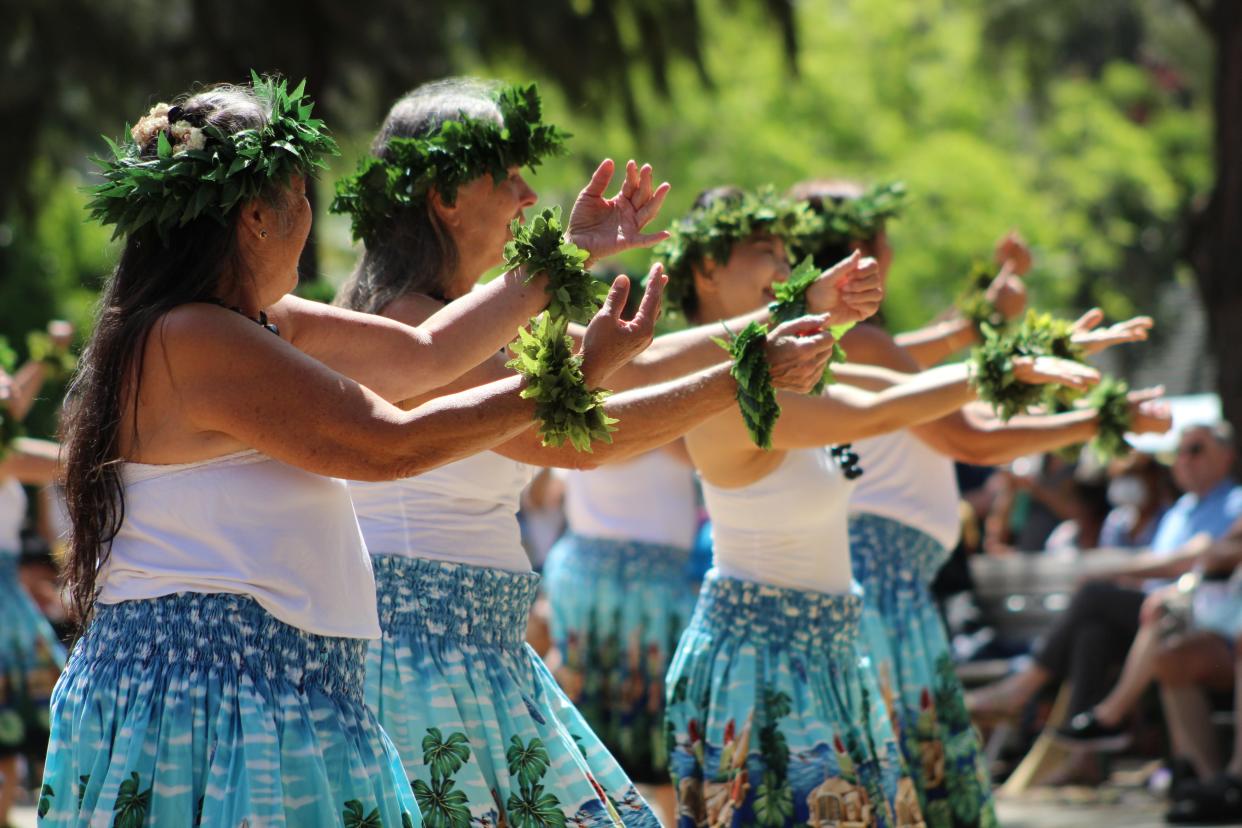
Texeira learned how to make leis from her grandmother using flowers she picked from her grandmother's house. In 2017, she opened Haku Maui, a lei shop that hosts workshops teaching others how to make their own leis and their importance in Hawaiian culture.
She's preparing a special lei. It's taking over a month to plan and make and involves consulting from her Upcountry Maui community.
The lei is her entry for the 95th Annual Lei Day Celebration, which happens on Lei Day, Monday, in Honolulu.
Since 1927, Lei Day has been celebrated by what feels like the entire state of Hawaii as a day where "we celebrate the love of lei," she said. All generations join in on Lei Day, even schools will crown a king and queen, and many locals gather around to watch the colorful, sweet-smelling festivities.
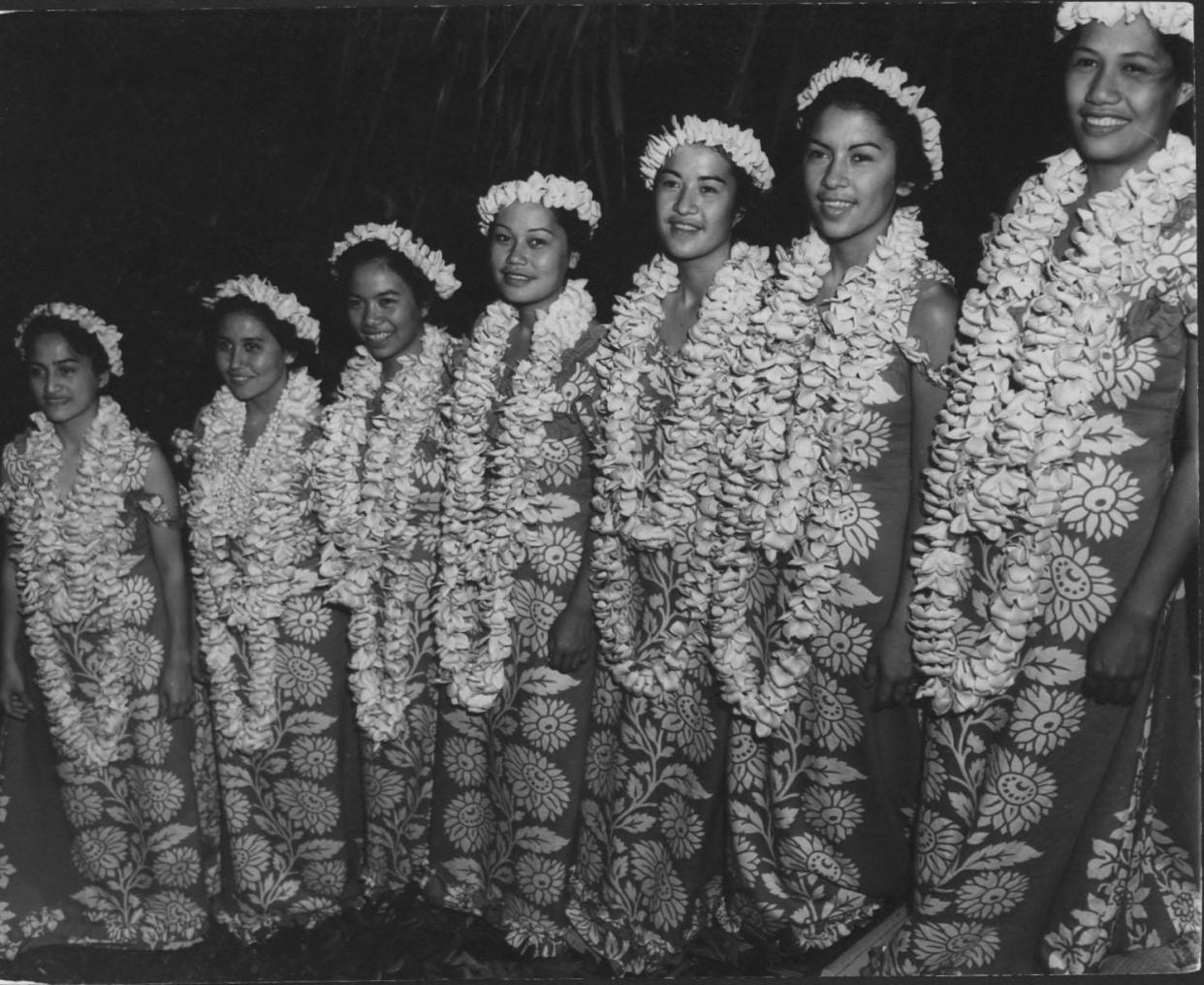
The overthrow of the Hawaiian monarchy: The only all-Hawaiian entertainment luau in Hawaii tells a dark story
Sustainable Hawaii tourism: What it's like to stay at Kauai's first zero-waste hotel
What is the significance of leis in Hawaii?
The tradition of the lei dates back to the beginning of Hawaiian culture when it was brought over by the Polynesians who migrated to the Hawaiian Islands.
An integral part of Hawaiian culture is to be intertwined with the natural world, and in ancient times, leis were used in sacred ways, like for religious offerings and a way to connect with Hawaiian gods, who manifested themselves in natural things, like valleys and plants.
People also wore leis as adornment, but chiefs wore a special type made from bird feathers that showed their societal rank.
These days, leis continue to hold cultural significance. Even the type of material used in the lei has meaning – the vibrant pink lokelani is the flower of Maui while the warm-hued flowers from the a‘ali‘i shrub represent resilience, according to Texeira. Some plants are only grown in certain regions, like pukiawe or black-eyed Susan growing in high elevation, so using these seeds in a lei would be meaningful to someone who may be from the mountains.
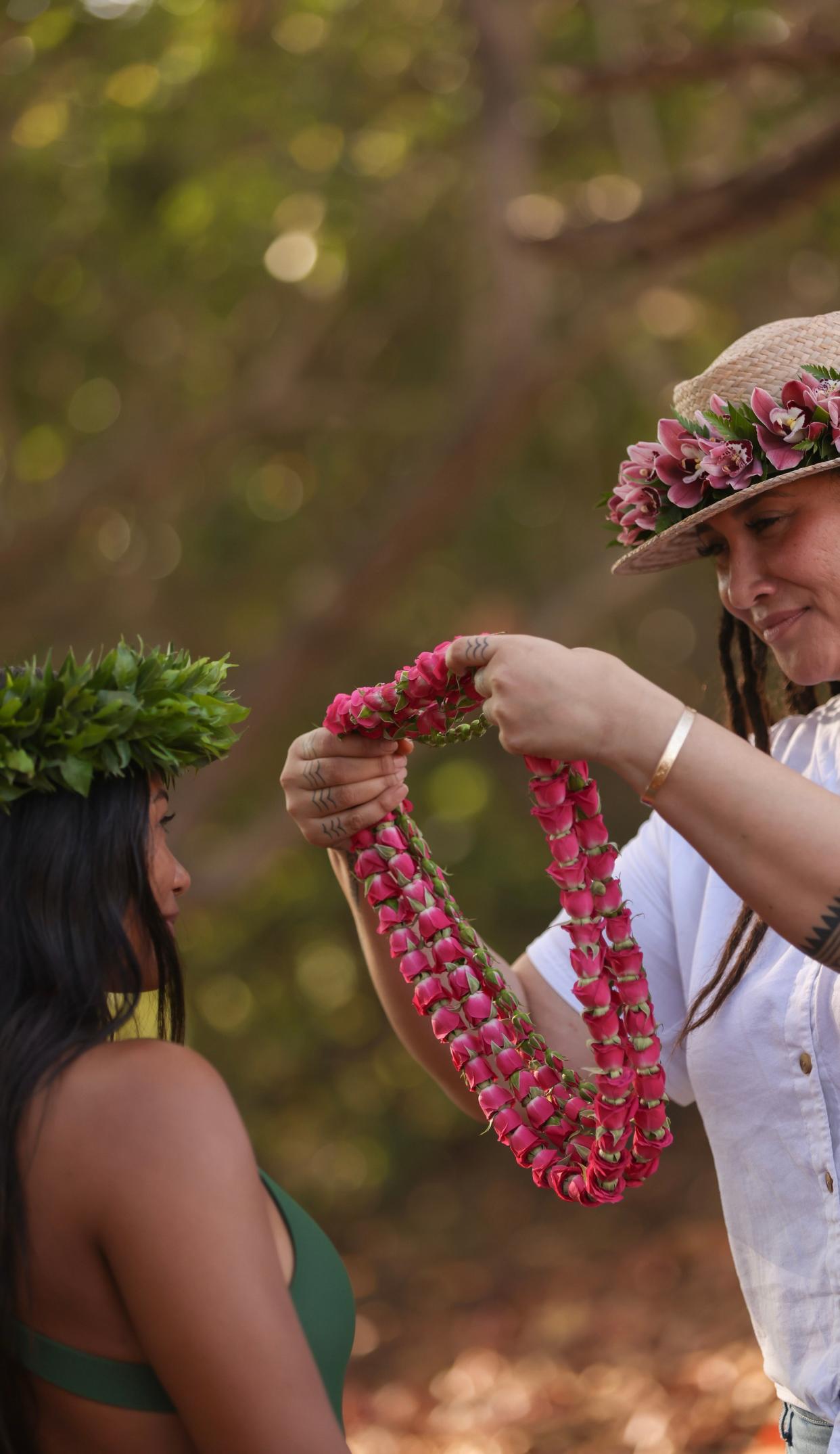
The gesture of giving a lei is also giving a part of your own self, a graciousness that's integral in the Hawaiian philosophy of aloha, or simply put, love and kindness.
"When you see lei, it's such a beautiful thing and you can’t wait to wear it," Texeira said, "But when you do wear lei, you're not only wearing these flowers, but you're wearing all of the mana (spirit) that came from that lei-maker."
When Texeira makes a lei, she feels connected to the different "piko of your body," which are parts of the body that are spiritually believed to be where life begins in Hawaiian culture, "and to your kupuna (ancestors) in that sense."
The same sentiment goes for Leilani Kupahu-Marino Kaho‘ano, an Oahu-based nurse and kumu hula (hula teacher) who has been making leis for over 50 years since she was a young child. She said she was born with a responsibility for how she carries a lei since lei is literally part of her name.
Kaho‘ano comes from a hula lineage, and so leis have a special place in her heart. Most halau (hula schools) have their own signature lei that students learn how to make as part of their practice. "It becomes one of our own members of the halau," Kaho‘ano said.
"Lei is unique to Hawaii in our way of sharing aloha and wearing that aloha," she added.
What goes into making leis?
A lot more than meets the eye.
"From the planting to nurturing to gathering correctly to preparing, cleaning and prepping then you sit down for this moment to make this lei," she said. "You need to find all the material, the time and energy to put into this art. There’s more than just a string of flowers that go into it."
Even the leaves must be cut at the right angle so the lei looks its best, said Auli‘i Cravalho, a Native Hawaiian actress and singer known for being the voice of Disney's Moana. Cravalho learned to make leis from her mom, who used to work at a lei stand on Hawaii Island.
"People think of lei as a string of orchids or plumeria but it gets so much more intricate than that. These are woven beautiful meticulous pieces of artwork that only last a few days," she added.
There are also many types of leis, which can be worn around the ankles, wrists, head and neck. Leis can be braided, twisted, knotted, or strung together via a needle. They also come in different shapes and sizes – long, short, open-ended, closed-loop – and can also be made of shells, leaves, seeds, or flowers.
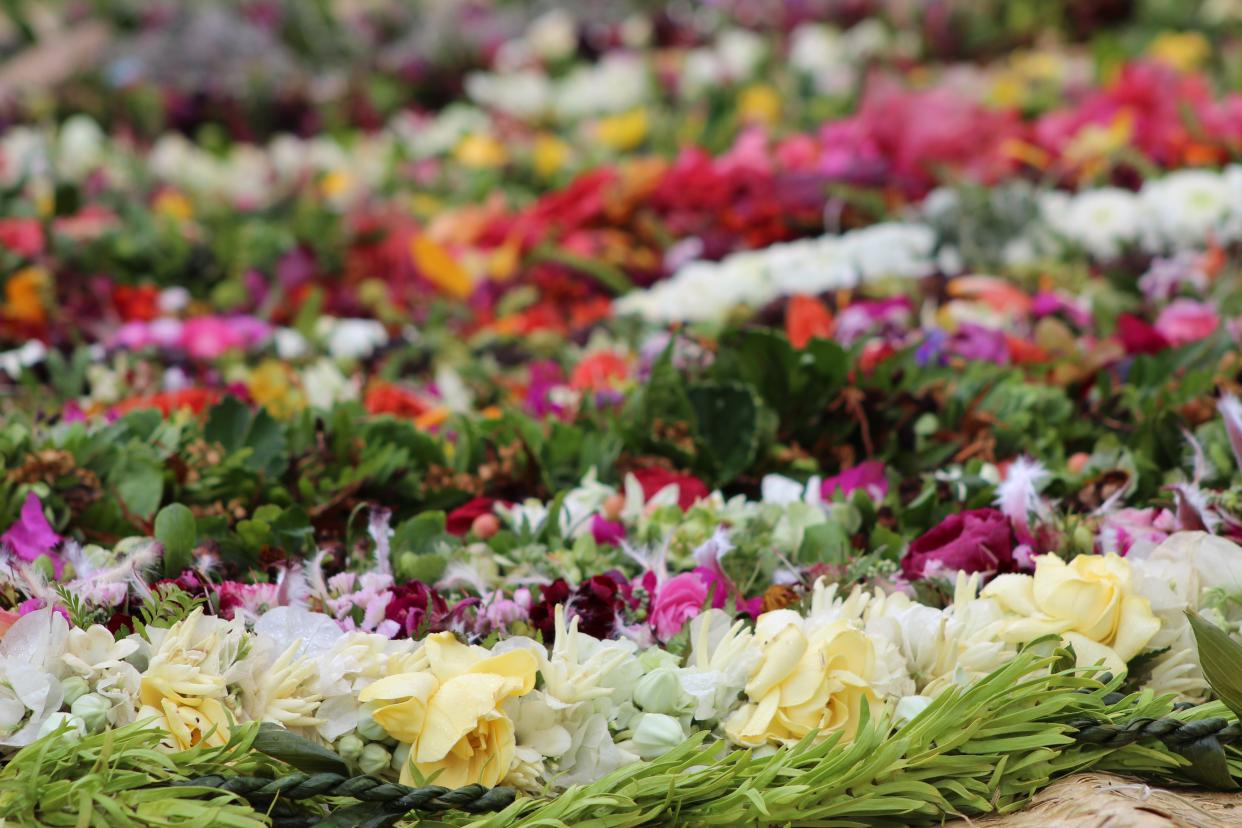
To properly make a lei, you don't just go out and pick whatever plants you like either. There's an established protocol involved in most Hawaiian practices, which includes asking for permission, giving thanks and always acting with respect, and lei-making is the same. Texeira follows Hawaiian protocol and what she was taught by her family, such as gathering plants at first light or picking plants in a certain direction or amount. There's an emphasis on not overpicking plants too.
In her workshops, Texeira teaches people to make lei wili, a circular lei that can be worn on the head or short around the neck. Her clients are a good mix of tourists and locals.
Can you eat history?: This Maui hotel gardener uses plants to educate guests on Maui's culture.
Listen up, tourists: Hawaii locals share what they wish visitors would stop doing
What is Lei Day in Hawaii?
Lei Day is when Hawaii comes together to celebrate all things lei. "We give lei all year round, but Lei Day is the day we celebrate it," Cravalho said.
The day started with the phrase, "May Day is Lei Day" from poet Don Blanding in 1927.
Locals soon began donning leis in downtown Honolulu and the first Lei Day is considered to be in 1927. In 1928, Honolulu Mayor Charles Arnold crowned Miss Nina Bowman as the first Lei Day Queen in 1928. By 1929, Hawaii Gov. Wallace R. Farrington proclaimed Lei Day to be May 1.
In 1929, a song came out with that name. This year, Cravalho covered the popular song with fellow Hawaiian musician Paula Fuga for Hawaiian Airlines. "I heard that song all the time growing up," she said, as it's often used as a beginner hula song.
"There's that aloha spirit of helping your neighbor," Cravalho said. "You have such a culture in Hawaii that it comes easy for us to help your neighbor. Your community is more than just your household, it's your neighbor, the lady who lives across the street."
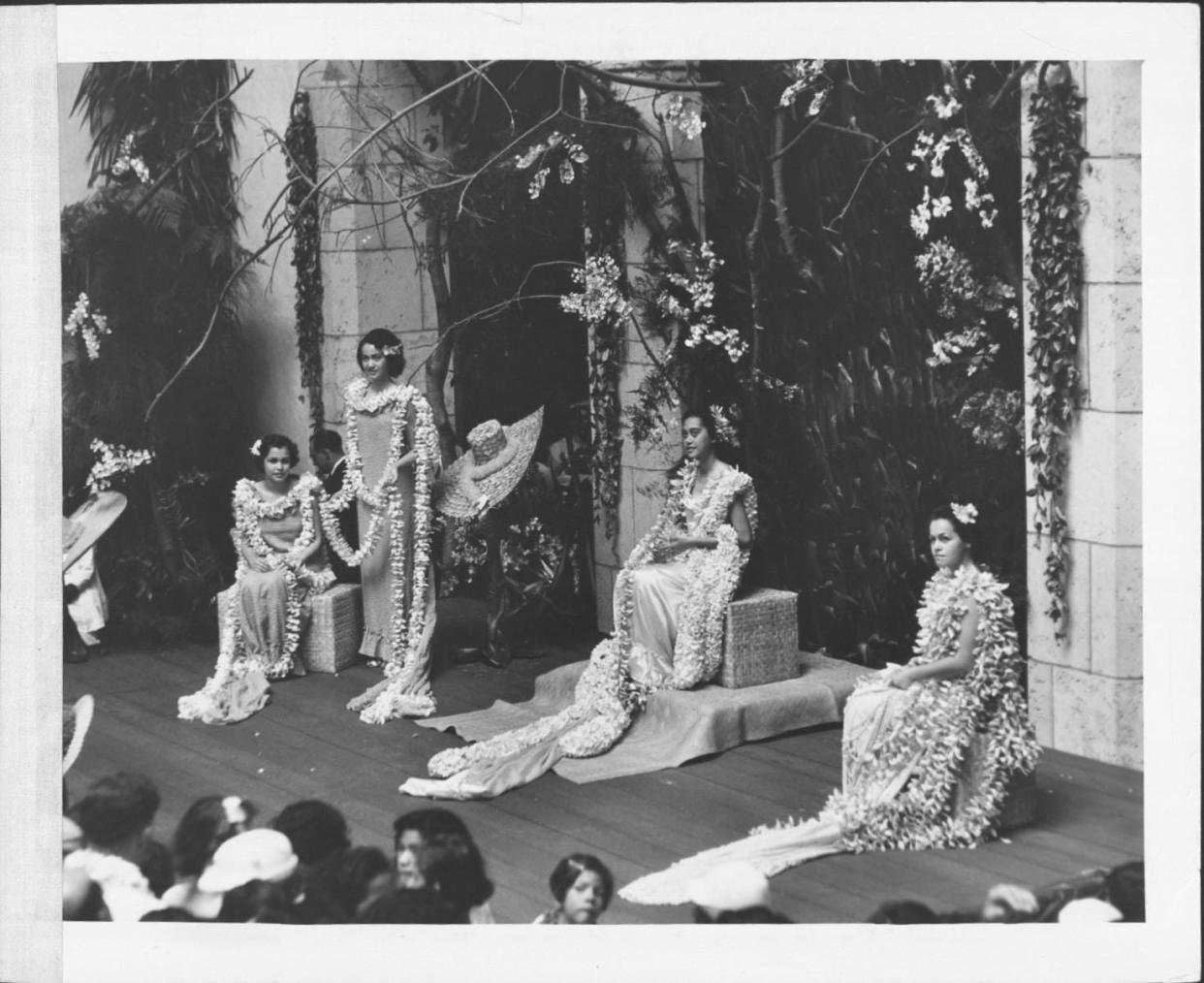
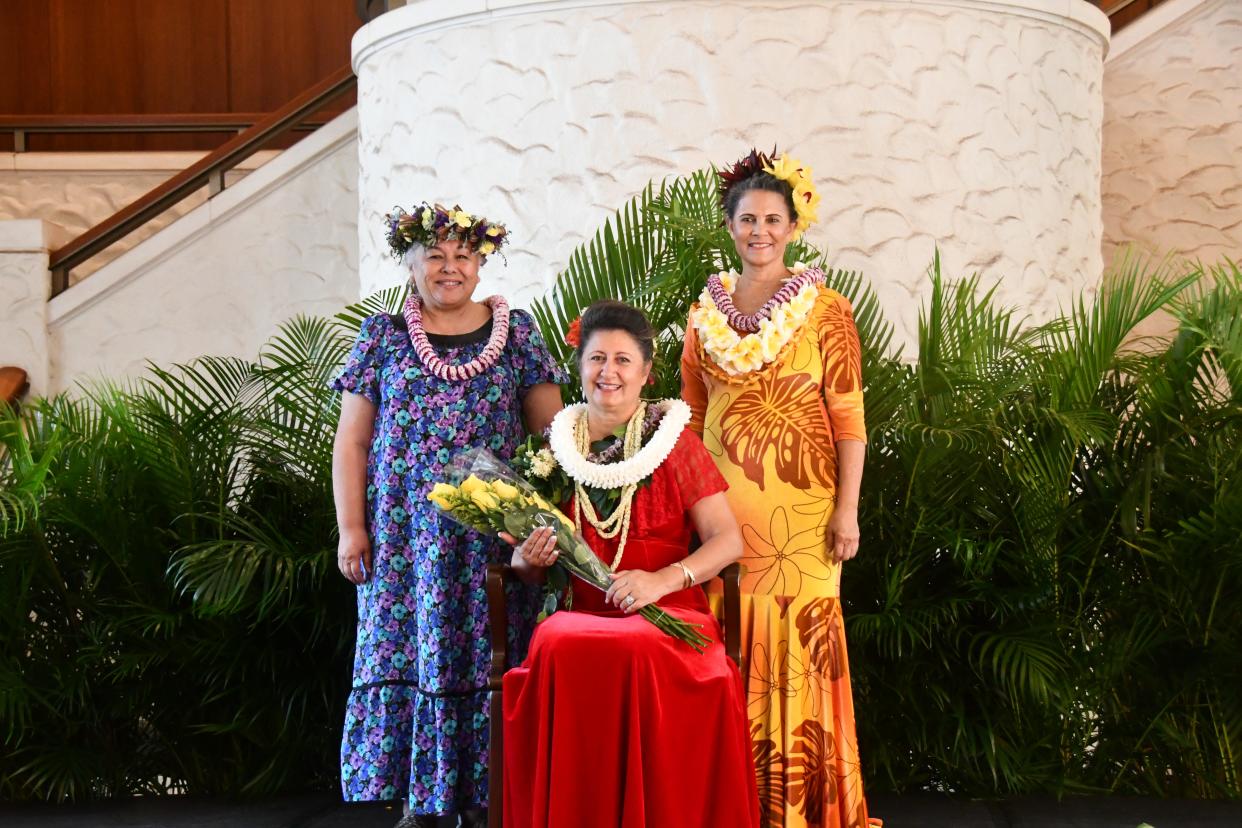
This year, Lei Day will celebrate its 95th year, and Kaho‘ano is this year's Lei Day Queen for the 94th Court. She earned her crown thanks to her commitment to spreading the tradition of leis in her everyday work as a nurse. When she worked as a registered nurse in neonatal intensive care units on Oahu, Kaho‘ano would make kukui nut leis – known for offering protection – for families to provide "a little more prayer and thoughtfulness."
"To have that sense of something they're familiar with from the outside amongst the technical equipment and the intensity of the unknown," she said.

As queen, Kaho‘ano and her two princesses will judge the three lei three contests, including one for youth lei-makers carrying on the tradition. This year's theme is Lei Wao Nahele, or the forest lei, so all leis must correspond with the ‘ohi‘a lehua, an endemic flower that's been beloved by Hawaiians for many years and is associated with the goddess Pele. In recent decades, rapid ‘ohi‘a death from a fungal infestation has been wiping out the plant.
After the festivities, all the entered leis will be placed on 100 kapa mats at Mauna Ala, a burial site for Hawaiian royalty, as an offering at night. Kaho‘ano will be the one to pick the first lei to place on the graves.
"It's one day that we have to pay honor to the whole story of lei – what came before us and what came after," Texeira said.
Kathleen Wong is a travel reporter for USA TODAY based in Hawaii. You can reach her at kwong@usatoday.com
This article originally appeared on USA TODAY: What is Lei Day in Hawaii? The meaning of leis in Hawaiian culture.
